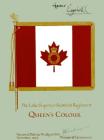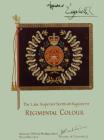1
LSSR Cap badge 'King's Crown'1949
Thunder Bay Military Museum, Thunder Bay, Ontario, Canada
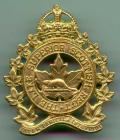 Credits:
Credits:Collection of David Ratz
2
LSSR Collar Dog1949
Thunder Bay Military Museum, Thunder Bay, Ontario, Canada
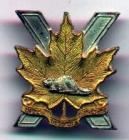 Credits:
Credits:Collection of David Ratz
3
Lake Superior Scottish RegimentAfter the demobilization of the 1st Battalion, LSR(M) and the disbandment of the 2nd Battalion, the regiment was reorganized as a Militia battalion. A number of wartime officers and men, mostly from the 1st Battalion, re-enrolled in the regiment. The 2nd Battalion had been composed of "category" men medically unfit and those too old or too young for overseas service. There were also the men who, though exempt military service under the National Resources Mobilization Act chose to serve anyway in the Home Army. Despite perceptions it was not a unit of "Zombies." However, there was an attitude exhibited by the returning 1st Battalion vets that the 2nd Battalion was made up of shirkers. This coupled with a feeling that they did not measure up caused many 2nd Battalion men not to re-enrol.
Soon however Militia training proved to lack the excitement of wartime activity and indifference from the community saw the strength of the regiment decline dramatically. The suggestion was put forward that interest could be revived if the unit was made into a highland regiment, given the region's connection to Scotland through the partners of the North West Company and Fort William. There was also in existence at Port Arthur the Macgillivray Pipe Band which could form the nucleus of a regimental band. The case was strongly put to the officers of the unit by the CO, Lieutenant-Colonel J.E.V. Murrell, who had lead the unit in Normandy.
Murrell contacted Lieutenant-General C.C. Foulkes, Chief of the General Staff and found him receptive to the idea. With regard to the heraldry he petitioned Sir Thomas Innes of Learney, Lord Lyon King of Arms about the proposed change and was directed to Duncan Alexander Mackintosh of Mackintosh-Torcastle, Chief of Clan Chattan, of which the Macgillivrays were a sept. He had little trouble gaining authority for the change and the redesignation occurred 29 June 1949 to The Lake Superior Scottish Regiment (Motor). Chattan granted his approval for the wearing of the Macgillvary tartan the following February in a letter to Murrell stating he was sure "that the traditions of the Clan will be worthily upheld."
4
Lake Superior Scottish Regiment31 July 2006
Thunder Bay Military Museum, Thunder Bay, Ontario, Canada

7
Training with Bren Carriers1950
Thunder Bay Military Museum, Thunder Bay, Ontario, Canada
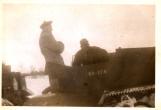 Credits:
Credits:Collection of Bruce Reith
8
Two LSSR soldiers1950
Thunder Bay Military Museum, Thunder Bay, Ontario, Canada
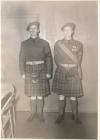 Credits:
Credits:Collection of Bruce Reith
9
The Modern RegimentWhile it is doubtful that adoption of the kilt had the effect Murrell hoped, by 1954 the unit strength had risen to 254 all ranks. This was in part effected by the absorption on 1 April 1953 of the personnel from 200 Light Anti-Aircraft Battery which had troops located in the growing pulp and paper towns of Terrace Bay and Marathon. These troops were converted to infantry and became D Company. Later in 1956 C Company was moved to the bustling iron mining community of Atikokan, west of the Lakehead. In 1958 the "Motor" designation was dropped and the unit turned in it's obsolescent Bren carriers. The Atikokan and Terrace Bay Companies were disbanded in 1965. The Marathon unit became a detached platoon of A Company in the 1970's and another platoon was opened in Geraldton. The Geraldton platoon went dormant in 1992 and Marathon platoon in 1995, though those members still serving were allowed to travel to Thunder Bay to train at the Headquarters.
11
Lake Superior Scottish Regiment Cap Badge "Queen's Crown"1970
Thunder Bay Military Museum, Thunder Bay, Ontario, Canada
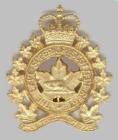 Credits:
Credits:Collection of David Ratz
12
The 1960's13
Recruiting brochure1960's
Thunder Bay Military Museum, Thunder Bay, Ontario, Canada
 Credits:
Credits:Collection of Bruce Reith
14
LSSR A Company1960
Thunder Bay Military Museum, Thunder Bay, Ontario, Canada
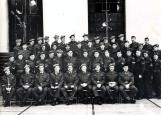 Credits:
Credits:Collection of Fred Johnson
